
What should you look for in a rain jacket for hiking and backpacking? While having a waterproof/breathable jacket can be a plus, it’s pretty easy to overwhelm their ability to vent moisture in the rain when you’re perspiring with a backpack strapped to your back. You’re really better off buying a more affordable jacket that has features that hikers need like a fully adjustable hood, pit zips, velcro wrist cuffs, and hem adjusters. Tracking down rain jackets that fit that description takes a little leg work, but we’ve done it for you below.
| Make / Model | Pit Zips | Avg Weight |
|---|---|---|
| Patagonia Torrentshell 3L | Yes | 14.1 oz |
| Black Diamond Stormline Stretch | Yes | 11.3 oz |
| Montbell Versalite Jacket | Yes | 6.4 oz |
| Lightheart Gear Rain Jacket | Yes | 6.3 oz |
| Outdoor Research Foray II | Yes | 11.3 oz |
| REI Rainier Rain Jacket | Yes | 13 oz |
| Enlightened Equipment Visp | Yes | 5.61 oz |
| Marmot Precip Eco | Yes | 13.1 oz |
| Frogg Toggs Xtreme Lite | No | 7.6 oz |
| Rab DownPour Eco | Yes | 11.3 oz |
We’ve also included waterproof/breathable rain jackets as well as ones made with non-breathable fabrics because you’re going to perspire when you’re wearing them in the rain, no matter how much they cost or what they’re made of. If staying perspiration-free in the rain is important to you while you’re hiking down a trail carrying a loaded backpack…maybe you should pick another sport. You’re going to sweat. Think of a rain jacket as part of your larger layering system instead. Its best use is to keep you warm when it’s raining or the wind is blowing hard, often in combination with a mid or base layer. Perspiring is inevitable. Your goal should be to stay warm and avoid hypothermia.
Here are the 10 top (reasonably priced) rain jackets that we recommend for hikers and backpackers.
1. Patagonia Torrentshell 3L ($179)
| Shop at REI | Shop at Patagonia |
2. Black Diamond Stormline Stretch Rain Shell ($180)
| Shop at REI | Shop at Backcountry |
3. REI Rainier Rain Jacket ($100)
4. Outdoor Research Foray II ($225)
The Outdoor Research Foray II is an updated version of OR’s most popular waterproof/breathable Gore-tex rain jacket. It is loaded with features including a three-way adjustable hood with a front brim, velcro wrist cuffs, chest and hand warmer pockets, YKK Aquaguard zippers, and elastic hem adjustment. But what sets this jacket apart from all others are its full-length torso-flow side-zips which can be opened like pit-zips but extend all the way down the sides of the jacket so you can fully ventilate the jacket like a poncho and even wear it over your hip belt to keep it dry in the rain. The women’s model is called the Outdoor Research Aspire II. Read the SectionHiker Foray II Review.
| Shop at REI | Shop at Backcountry |
5. Montbell Versalite Jacket ($249)
6. Enlightened Equipment Visp Rain Jacket ($250)
7. Marmot Precip Eco ($100)
8. Lightheart Gear Rain Jacket ($150)
9. Frogg Toggs Xtreme Lite ($60)
10. Rab Downpour Eco Rain Jacket ($140)
| Shop at REI | Shop at Amazon |
Backpacking Rain Jacket Selection Criteria
What are the most important features to look for on a hiking and backpacking rain jacket?
Adjustable Hoods
Unfortunately, many rain jackets have oversized hoods that are intended for skiers and climbers who wear protective helmets. What you should look for is a fully adjustable hood with a rear volume adjustment so you can shrink the hood size to fit your head, side pulls so you can adjust the size of the face opening, a wire or shapeable brim to shield your eyes from wind and snow, and a high collar that covers your neck and mouth. All of these features will help protect your face from the cold and wind and help you stay warmer.
Zippered Pockets
You can’t have too many rain jacket pockets. They’re great for carrying spare gloves, hats, and keeping navigation tools in easy reach. They’re also good for keeping snacks close at hand so you can eat while you hike. I view rain jacket pockets as an extension of my backpack because the extra storage cuts down on the number of times I have to stop to get clothes or food out of my pack.
Venting Capabilities
When you have to hike in cool wet weather, you want to limit the amount you perspire by actively managing your warmth level. The key to doing this involves venting excess warmth by removing or venting layers. A good rain jacket should provide several ways for you to dump excess heat without having to take it off completely. Here are some of the most important features to look for when comparing different jackets.
- Adjustable Hook and Loop (Velcro) Wrist Closures: This helps regulate the body heat at your wrists where the blood flows close to the surface of your skin. They can be worn under gloves or over them depending on your preference and the glove type.
- Two-way front zipper: If you pull the bottom half up, you can dump a lot of excess torso heat, poncho-style.
- Hem drawcord: Cinch it closed to keep the wind from blowing up between your legs and robbing your torso of heat.
Breathability Ratings
What should you look for in terms of breathability ratings when looking at hiking rain jackets? For inexpensive rain jackets, the best you can hope for is 10,000 (g/m^2/d) MVTR (movable water vapor transmission rate), which is pretty lackluster. Most of the manufacturers listed above don’t publish the MVTRs for their jackets, because they’re not that competitive with more expensive garments.
But to be honest, I don’t trust the breathability ratings published by manufacturers because they’re measured in ideal laboratory conditions that have little to do with actual use. Pit zips and active venting trump breathability claims any day. If you get too hot, venting your rain jacket is going to cool and dry you off far more quickly than waiting for water vapor to move across a breathable membrane while your zipper is closed.
Check Out All of SectionHiker's Gear Guides!
- 10 Best Hiking Shoes and Trail Runners
- 10 Best 2-Person Backpacking Tents
- 10 Best 1-Person Backpacking Tents
- 10 Best Backpacking Stoves
- 10 Best Backpacking Water Filters
- 10 Best Lightweight Backpacks
- 10 Best Ultralight Backpacks
- 10 Best Backpacking Sleeping Bags
- 10 Best Ultralight Backpacking Quilts
- 10 Best Lightweight Backpacking Chairs
- 10 Best Backpacking Sleeping Pads
- 10 Best Backpacking Rain Jackets
- 10 Best Hiking Daypacks
- 10 Best Hiking Pants
- 10 Best Trekking Poles
 SectionHiker.com Backpacking Gear Reviews and FAQs
SectionHiker.com Backpacking Gear Reviews and FAQs 
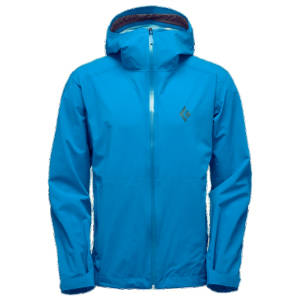
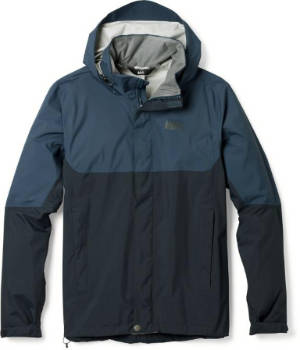

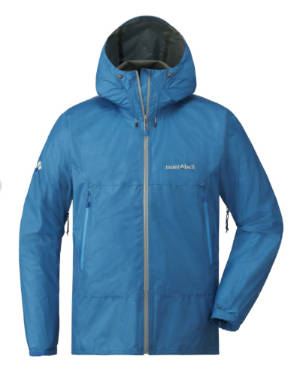
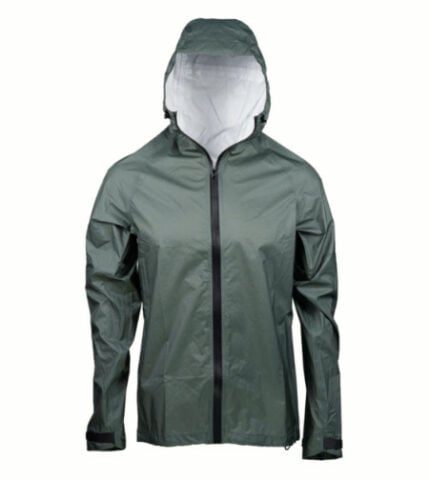



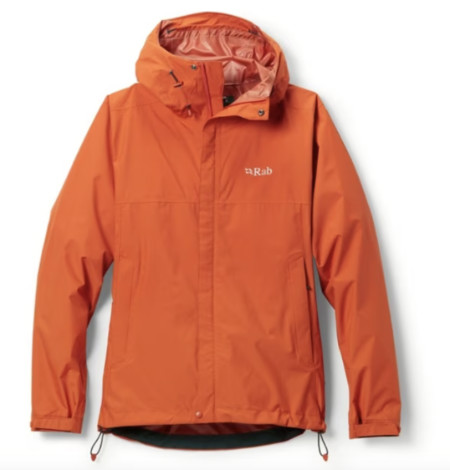
Your perspiration blurb made be smile :)
Some useful info, as ever.
Thanks Philip
Yeah – you sweat a lot more humping a backpack than riding a chair lift. As you can imagine that requires a very different kind of “rain” jacket.
Pretty surprising that none of these jackets are Gore-Tex,which is far better than anything mentioned here.Gore-Tex is the only true waterproof,breathable and windproof fabric-and I have tried many and in arduous conditions-nothing comes close to it..I was in an elite Special Operations unit in the military and we got Arc’teryx gear before it was cool-we deployed to Afghanistan 21 days after 9/11/01 and we had been issued a full set of gear from Arc’teryx and I can tell you,carrying a hundred pounds of gear and weapons at 10,600 ft way up in the Hindu Kush will test everything you brought.Just to get climatized to the altitude was difficult,but going from 80 degrees during the day,to 0 at night with snow and rain as well would quickly show you how inferior most of the gear on the market is.My shell saved my life up there-more than once.
actually – the foray II is a gore-tex jacket. but it’s on here because it has huge torso zips. Gore-tex has been copied by many brands at this point including some here and works best in arid cold climates. But for hot and humid, it’s largely a failure. It’s just physics. That’s why its so popular on ski jackets.
At the end of the article, you mention the two-way front zipper as a desirable feature (I agree!), but do any of these jackets have one?
not that I recall. two-way zippers went the way of the dodo when companies started using “waterproof” zippers. You can find them on insulated jackets sometimes.
I really like the torso zips on the OR Foray. Last year I had to replace my old Foray and I was disappointed to see that the two-way front zip was eliminated in the current version. I used the two-way front zip all the time and definitely miss it.
Been real happy with the lightheart jacket, definitely recommend as a lightweight and 100% waterproof jacket. I even use it as a wind layer in the shoulder seasons.
I bought the Antigravity 2.0 and couldn’t be happier. It has an adjustable hood which makes it far superior to the Lightheart Gear IMO.
Considering Antigravity or Lightheart, but any thoughts on the Packa?
It’s an option. I prefer garments that are more normal, can be worn in high wind, and when not backpacking.
I was about to chew you out for ignoring the EE Visp… but then I noticed I couldn’t find it on their web site. Oh no… did they quit making it?
no longer made.
Yes! Two-way zips. I mention it every single time I review a jacket. And I basically think waterproof breathable is a hoax. Like the Emperor’s New Clothes ha ha
I just want a rain jacket that really works in a soaking rain! I have been in a few storms where the “waterproof” didn’t last, and I was soaked through to my skin. I don’t tolerate cold very well and have been nearly hypothermic several times. Anyone found a jacket that will keep you dry in a downpour for several hours?
Nice review. I’d love to see Frogg Toggs put some pit Zips in their jackets…..
I’m surprise the Outdoor Research Apollo jacket didn’t make this list. It meets all of the listed “selection criteria” and is very reasonably priced; less expensive and lighter, for example, than the OR Foray jacket. I’ve had my Apollo jacket for 3 years now and used it for all kinds of inclement weather. I’m very pleased with how it has performed and held up — highly recommend.
Actually, I thought OR canceled it which is why I didn’t include it. But they just introduced a new model.
Here’s the new model (only available at Outdoor Research)
https://www.outdoorresearch.com/us/collection/mens-apollo-jacket-269169
Here’s the old model, discounted at REI for about 25% Off.
https://www.rei.com/rei-garage/product/213542/outdoor-research-apollo-rain-jacket-mens
I ordered and received my LightHeart rain jacket based on info in this discussion. The magenta pink is beautiful. It will be easy to pack into a pannier or saddle bag. The fit is great and based on my discussion with the folks at Lightheart. I’m leaving the sleeves long because as was pointed out, the forward stretch while bicycling (it also runs long on me in the hips) will take up much of the extra.